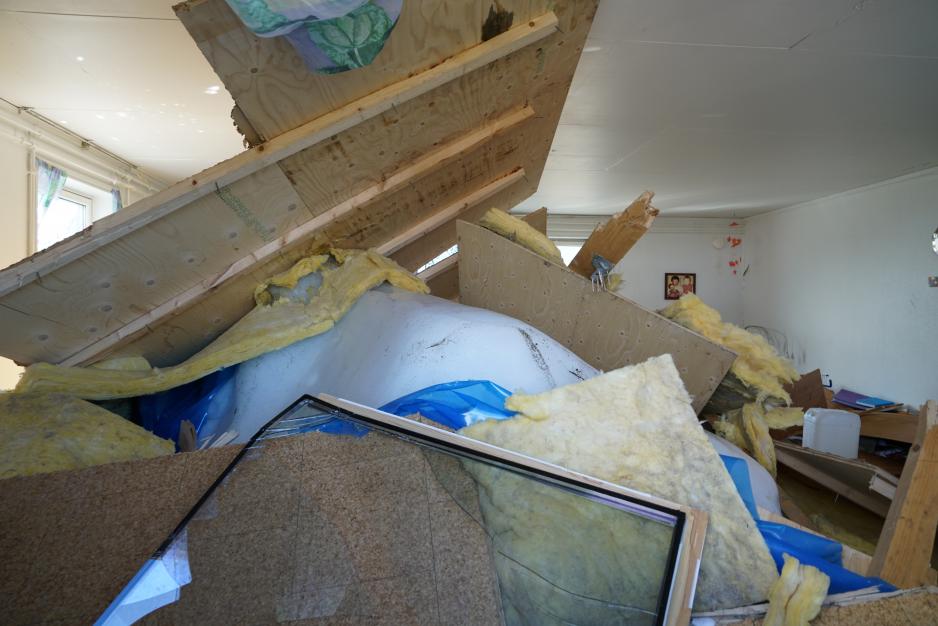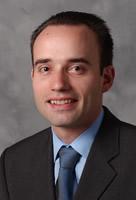Arctic Landslides: The Hidden Consequence of Thawing Permafrost

In a year filled with dozens of deadly disasters, the June 17, 2017 tsunami in Western Greenland already seems forgotten. But a team of reconnaissance researchers has been working to uncover what went wrong – and what we can do to protect villages in future landslides.
Last summer’s landslide and tsunami in Western Greenland left the small fishing village of Nuugaatsiaq broken by the loss of four lives and a number of homes.
In the first few weeks of disaster relief, the safety of residents takes priority. But as local leaders move from emergency response to long-term recovery, there is a need to learn from the community’s devastation in order to prepare for future disasters. The first step in this process seems simple: identify the cause of the disaster.
That’s easier said than done.
Understanding the Tsunami
In July, Georgia Tech Professor Hermann M. Fritz and a reconnaissance team of researchers traveled to Western Greenland to collect vital perishable data from the disaster to analyze what happened, and how natural and man-made infrastructure performed in the catastrophic event.
Dr. Fritz, whose research focuses on water resources engineering and resilient infrastructure systems, was awarded a rapid response research grant from the National Science Foundation to study the Uummannaq fjord system impacted by the twin landslides and tsunami. "The landslide generated tsunami represented a unique opportunity given the size of the landslide on the order of 50 Million cubic meters and a large drop height with the top of the landslide scarp more than a 1km (up to 1200m) above the Karrat Fjord," Dr. Fritz explained in an interview with High North News.
In partnership with the Government of Greenland, the team collected high quality oblique aerial photogrammetry of the landslide, scrap, and debris avalanche track as well as ground based tsunami inundation measurements. This data has helped Dr. Fritz and his team to reconstruct the initial shape of the landslide in a 3D model video. This essentially provides the initial landslide volume and positon above the Fjord of the tsunami source, according to Dr. Fritz. He went on to explain his team’s survey of the tsunami heights both laterally to the landslide and across the fjord. "The scale of the water body is unique given the 1km depth and 6km width at the impact site, which allows for a semi-circular wave propagation until it hits the opposing shoreline," Dr. Fritz summarized of his analysis. "Ultimately the field data will serve the advancement of landslide and tsunami modeling."

What’s Happened Since Summer
Post-disaster reconnaissance following major natural and man-induced events provides local leaders with databases of information that can help form the basis for science-based decision-making. "Tsunamis generated by landslides pose a tsunami hazard to coastal areas not typically at risk to earthquake generated tsunamis." Dr. Fritz explains. "Landslide generated tsunamis can exceed earthquake generated tsunamis locally but they decay quickly with propagation distance posing more of a local or regional hazard rather than a transoceanic hazard."
The uniqueness of the Greenland tsunami makes the modeling, cataloguing, and analysis done by Dr. Fritz in Greenland this summer and back at Georgia Tech this fall all the more important for future decision making.
But the 3D model reconstruction of the initial landslide to understand its causes and effects is just the beginning of a much longer research endeavor to make coastal communities more resilient to disasters.
"This needs to be followed with a kinematic landslide model simulating the tsunamigenic high velocity debris avalanche down the fjord wall to the seafloor along with the tsunami modeling," Dr. Fritz says as he outlines next steps in his research. "In terms of the second landslide 1km to the west of the June 17 landslide the static 3D model provides some indication of size and surface displacement but in terms of volume the slide thickness will be critical and more challenging."
Is climate change a factor?
From wildfires in Portugal to Hurricanes in the Caribbean, earthquakes in Mexico to volcanoes in Indonesia, the world witnessed an immense number of natural disasters over the course of 2017. Swiss Re AG, the world’s second-biggest reinsurer, estimates that more than 11,000 people have died or gone missing, with global insured losses hitting $136 billion.
One big question looms in the shadows of 2017’s disasters: Was climate change a factor? The short answer is: Yes, but it’s complicated.
Recently published research from two research grounds found that record rainfalls in Texas this summer from Hurricane Harvey were as much as 38 percent higher because of a warming climate. And in Greenland, warming was also a potential factor in causing the deadly landslide and subsequent tsunami. "Deglaciation and freezing and thawing cycles (as well as precipitation) are destabilizing factors in areas rarely exposed to earthquakes such as Greenland. In laymen’s terms," Dr. Fritz summarizes, "the ice in frozen mountain slopes (permafrost) acts as a stabilizing glue."
As permafrost thawing at unprecedented rates across the Arctic, landslides in higher elevation geographies like Greenland’s fjords are poised to get worse. And though the June 2017 tsunami in Greenland was just a small blip in a very deadly – and costly – year of dozens of natural disasters, Dr. Fritz’s ongoing research from the event may well help to prevent future destruction.

